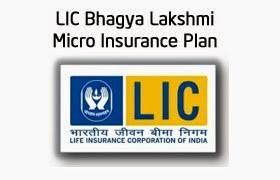All employers who are having 20 or more employees are covered under the Provident Fund and Miscellaneous Provisions Act of 1952.
They have to compulsorily deduct 12% of the salary(Basic+DA) of the employees working under them and also to contribute 12% of the salary (Basic+DA) as employer’s contribution and remit both the amounts to the Provident Fund Authorities every month.
The 12% is to be deducted subject to ceiling on salary of 6500. Out of this amount, an amount of 8.33% out of the employer’s contribution of 12% is transferred to a pension fund account. From this Pension Fund the employees are assured of a pension depending on the accumulation in their account. The remaining amount of the employer’s contribution along with the employee’s contribution is invested as per the norms prescribed by the Government, and interest is credited to the employee’s PF account. This balance amount to his credit will be paid to him in case of his resignation or retirement. However in case of death while in service, the payment of contribution will cease and only the accumulated balance standing to his credit at the time of death will become payable to his family. If this happens in the early part of his employment, the amount would be meagre.
In order to supplement the benefits available, the Employees Deposit Linked Insurance Scheme (EDLI) was introduced in 1976.
In 1976, when the scheme was introduced the benefits were as follows:
1. In case of death of an employee while in service, in addition to the accumulated amount of Provident Fund to his credit an additional amount equal to the balance at the time of death subject to a maximum of Rs. 10000 will be paid to his family.
2. For this benefit, all the employers covered under the PF Act, shall contribute 50 paise for every hundred Rupees Salary towards the insurance and one paisa for every Rs.100 salary towards administrative expenses.
The scheme also provides an exemption clause Section 17(2A), as per which if the employer provides better benefits than that of the EDLI Scheme, then he can discontinue payment of the above contribution of 51 paise per every Rs. 100 salary to the PF authorities, but after getting exemption from the Central Provident Fund Commissioner (CPFC), New Delhi.
Life Insurance Corporation of India came out with an alternative and better scheme in 1976 and offered a Group Insurance Scheme in lieu of EDLI. The sum assured was 10500 flat and the premium was based on the ages of the employees. Generally it was found that the premiums payable to the insurer were much less than the contribution payable to the PF, and hence many companies switched over to the LIC Scheme after getting exemption from the CPFC, New Delhi.
The benefits under the scheme were changed periodically in 1990, 1994 and 2000 and 2010 as follows:
In 1990, the death benefit was made equal to the PF balance upto 15000, and in case the PF balance is above 15000, the death benefit was equal to 15000 + one fourth of the amount in excess of 15000, subject to a maximum of 25000. So LIC modified its scheme and offered a graded benefit of 11000 to 27000. It also assured that in case of death of a member, the benefit his family will get will at least be 2000 above what they would have got under the PF Scheme.
In 1994, the death benefit was made equal to the PF balance upto 25000, and in case the PF balance is above 25000, the death benefit was equal to 25000 + one fourth of the amount in excess of 25000, subject to a maximum of 35000. So LIC modified it scheme and offered a graded benefit of 11000 to 37000. It also assured that in case of death of a member, the benefit his family will get will at least be 2000 above what they would have got under the PF Scheme.
In 2000, the death benefit was made equal to the PF balance upto 35000, and in case the PF balance is above 35000, the death benefit was equal to 35000 + one fourth of the amount in excess of 35000, subject to a maximum of 60000. So LIC modified it scheme and offered a graded benefit of 5000 to 62000. It also assured that in case of death of a member, the benefit his family will get will at least be 2000 above what they would have got under the PF Scheme.
From July, 2010, the death benefit was made equal to the PF balance upto
50000, and 40% of the PF balance in excess of 50000, subject to a maximum benefit of Rs. 100000. Again it was modified so that the death benefit will be as above or last drawn salary (with a maximum of 6500) x service with a maximum of 1,30,000, whichever is higher.
The LIC also offered a flat cover of the maximum of 27000 or 37000 or 62000 or 102000 or 132000 if the employers are willing to pay a little higher premium.
From 2001, with the entry of private players in the life insurance industry, the competition became more intense, and the private insurers started offering more benefits. For example they offered a higher cover for each company depending on the age group of the employees in return for the payment of 51 paise per every hundred Rupees salary to the insurer. Now many of the insurers including LIC offer this option also, which gets an assured sum of money, which is, much more than the amount the employees would have got under the PF Scheme. With all these developments a large number of PF EDLI Schemes are shifted from PF to the Insurance Companies.
Now let us see what is the procedure for shifting from PF Scheme to an insured scheme.
1. First the company will have to put up a notice in their notice board, informing the employees of their decision to shift from PF Scheme to insured scheme and inviting objections if any from the employee. Normally there will not be any objection as the benefits are more for the employees.
2. Then the employer will have to make an application to the CPFC requesting for exemption from the PF EDLI scheme and approval for the switchover.
3. The insurer from whom the employer desires to get the scheme should have an alternative scheme, which is already approved by the CPFC.
4. Normally the approval is automatic and the insurer can commence the scheme from the first of the month in which the application to CPFC is made.
Then the employer can stop payment of the EDLI contribution to the PF
authorities and start paying the premium to the insurer. However in spite of paying the premium, the employer has to pay half a paise per every Rs.100 salary to the PF authorities as inspection charges.
Thus it is a compulsory and statutory scheme and all the employers covered under the PF Act will have to contribute either to the PF EDLI Scheme or to an alternative insurance scheme. Now suppose an employer switches over to the insured scheme and then stops payment of the premium to the insurer. Then the employees will be deprived of their benefits. The PF authorities have the authority to inspect the company and see that the premiums are regularly paid to the insurer, so that the employees will not be deprived of their benefit. Also the insurer can inform the PF authorities about the non payment of premium so that they can initiate action against the employer. In case the employer is found to be at fault then he will be liable for imprisonment and\or monetary penalties.
Thus Group Insurance in lieu of EDLI is a very good opportunity for all the insurers to offer alternative and better schemes and get a large amount of business.












0 Comments